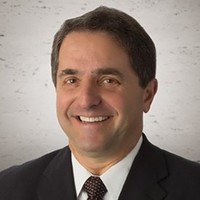
Philip Goldman
is a recently retired IP practitioner who remains active in pro bono IP matters, and occasional consulting or of counsel roles, primarily in transactional and tech transfer matters, through his Segue IP LLC. His initial hopes of attending veterinary school in Minnesota were repeatedly dashed, given his non-resident status. Armed with several years in undergrad and graduate school, and at the research bench, while dabbling in improv, he eventually turned to law school, with the sole focus of someday getting out and suing the vet school. Instead, 3M’s IP department found him during his first semester of evening law school, where he then spent the first third of his career learning the many facets of 3M’s sophisticated IP practice, followed by the next two-thirds of his career in private practice, where he worked to apply the lessons he had learned to the realities of the outside world.
For more information or to contact Phil, please visit his Firm Profile Page.

Recent Articles by Philip Goldman
I have often thought of the patent process as being like the car wash near my house – where you pull up to the entrance, to the point where an attendant shouts “neutral!”, and your car is then magically pulled through a defined series of stations until it comes out clean at the other end. The key difference being – the car wash takes five minutes, costs six bucks, and requires no effort. Not so with patents. In a way, the patent system can be seen as a far more rigorous 20-year car wash – beginning from the moment you pull into the patent office by filing your first application, thereby obtaining that all important Filing Date. You are then led along an arduous path of decisions, deadlines, and stages – all with corresponding costs. No matter when and where you might actually obtain a patent along that path, assuming you do at all, you are out the door (i.e., those patents will expire) generally 20 years to the day after you first heard “neutral!”.

![[IPWatchdog Logo]](https://ipwatchdog.com/wp-content/themes/IPWatchdog%20-%202023/assets/images/temp/logo-small@2x.png)
